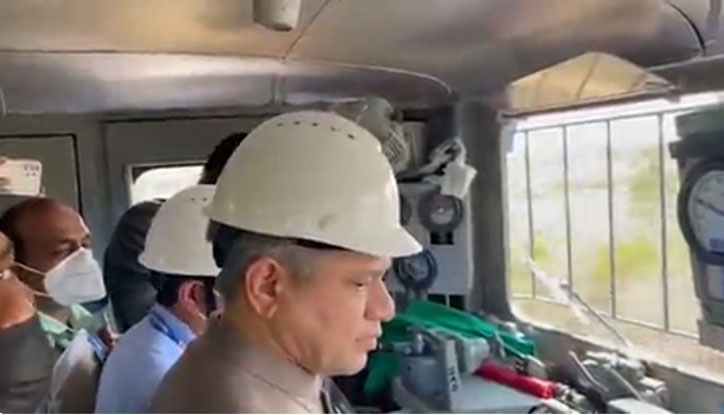
[ad_1]

New Delhi: After years of system planning and multiple rounds of track trials, Indian Railways has been able to independently prevent head-on collisions between two trains running on the same track (whether due to human error or sudden technical failure).
The railway has started successful trials and testing of the indigenously developed collision avoidance system, popularly known as ‘Kavach’.
Railway Minister Ashwini Vaishnaw along with Railways Chairman and ministry officials on Friday witnessed a successful live demonstration of India’s indigenously developed Train Collision Avoidance System (TCAS) ‘Kavach’ which operated without any errors.
Besides, the committee has also outlined a plan to promote ‘Kavach’ on a large scale abroad as a model of India’s technological advancement and self-reliance.
During the live demonstration, Vaishna boarded the electric locomotive equipped with ‘Kavach’ and said, “Brilliant! Bravo! Efficient planning and excellent execution have made us (Indian Railways) self-reliant in preventing the collision of two trains and making the country self-reliant in line with the vision of Prime Minister Narendra Modi. This is fantastic.”
Vaishnaw added that ‘Kavach’ will be installed on 2,000 railway line networks during the fiscal year 2022-23 and thereafter more than 4,000-5,000 railway line networks will be included in the safety system every year.
The “Kavach” technology automatically brakes and stops the train at a safe distance as soon as it detects another train coming from the opposite direction on the same track.
Being a SIL-4 certified technology, “it will also stop the train immediately after it crosses a red light or control the speed after the train exceeds the prescribed speed limit,” the minister said.
“The future plan is to rapidly scale up the technology and export it to many other countries,” he said.
Kavach was developed by the Research Design and Standards Organisation (RDSO) in collaboration with three other vendors.
After successful trial runs, ‘Kavach’ has been put into service on over 1,098 km of lines and 65 locomotives under the South Central Railway.
ADGPR Railways’ Rajiv Jain said the first field trial of the technology was conducted on a passenger train in 2015-16 and it was declared as the National Automatic Train Protection System for Indian Railways in 2020-21.
He further added that RDSO has approved the route for running train services at 160 kmph.
“Indian Railways has prioritized the installation of Kavach on high density routes and on Delhi-Mumbai and Delhi-Howrah routes with a speed limit of 160 km/hr and equipped with automatic block signalling and centralised traffic control system,” Jain pointed out.
In addition, it will be installed on networks with high usage of automatic block signalling systems.
[ad_2]
Source link

